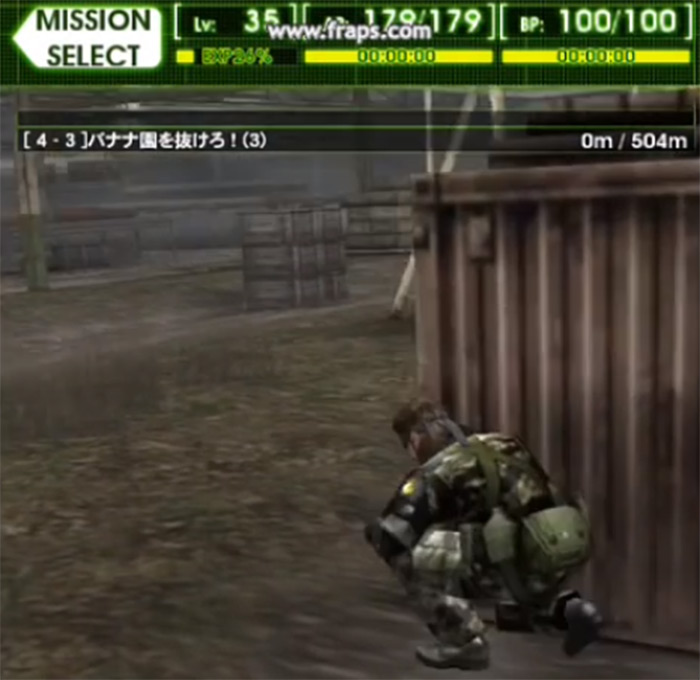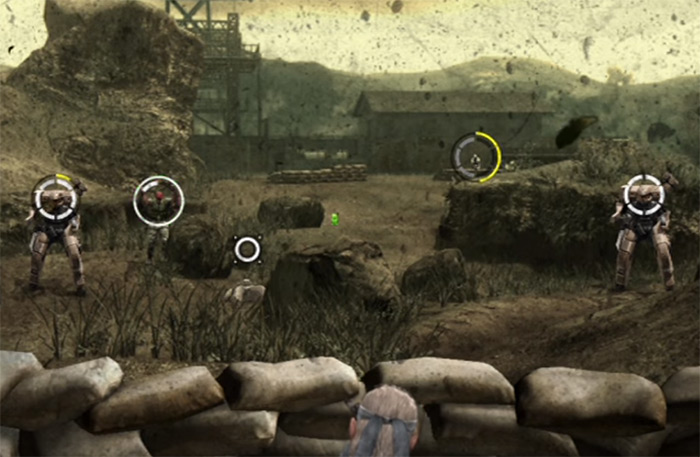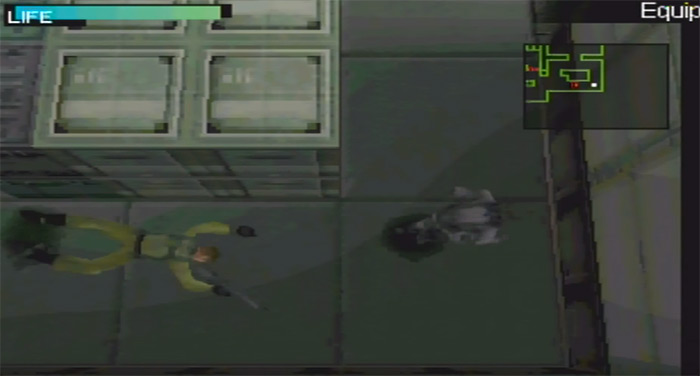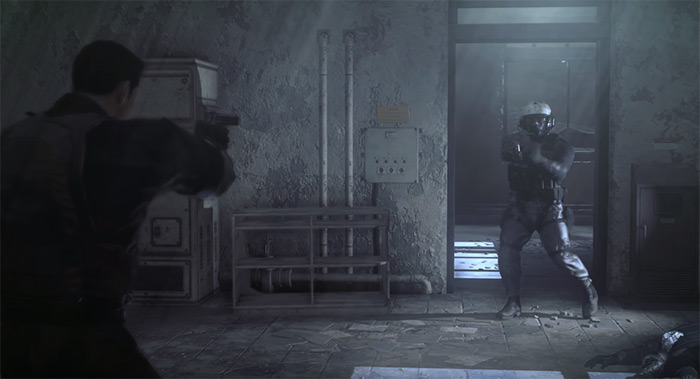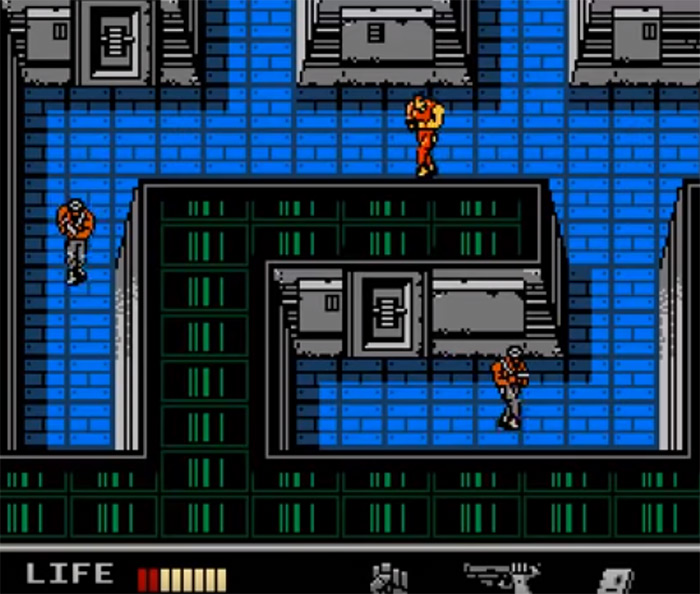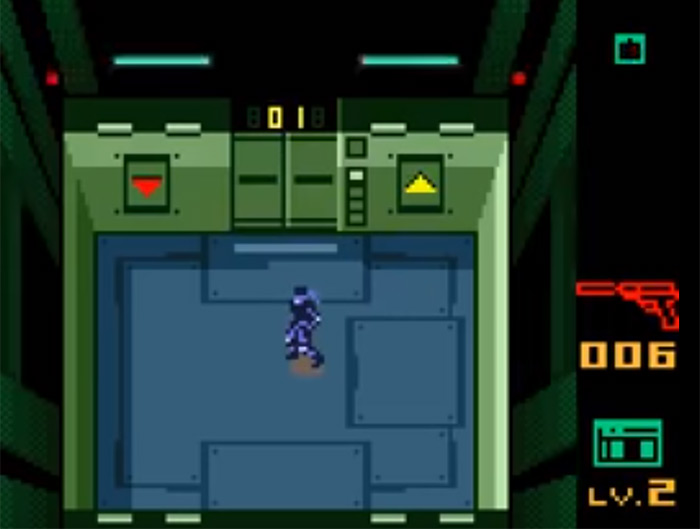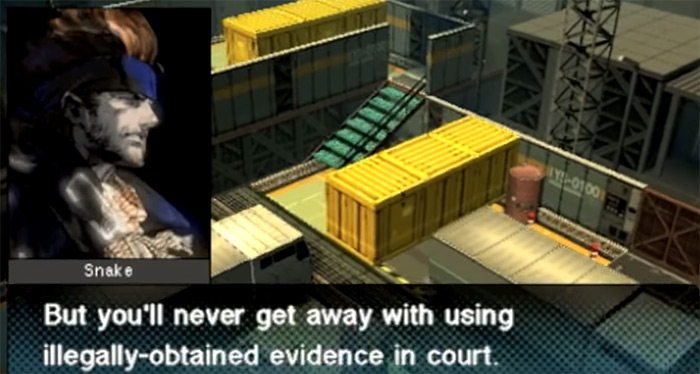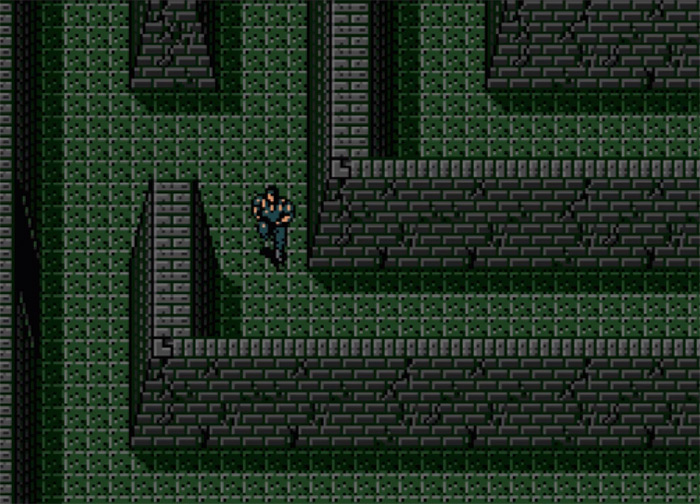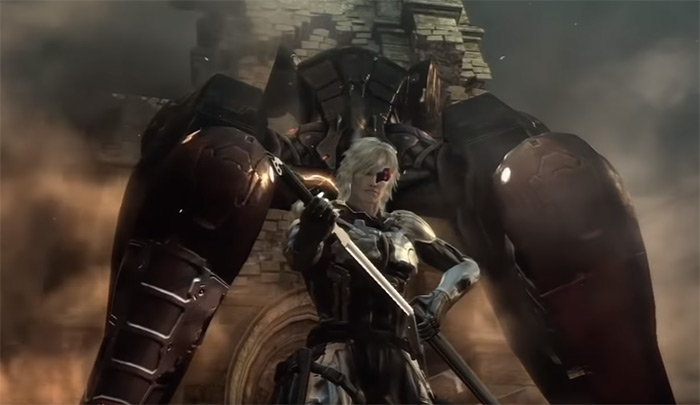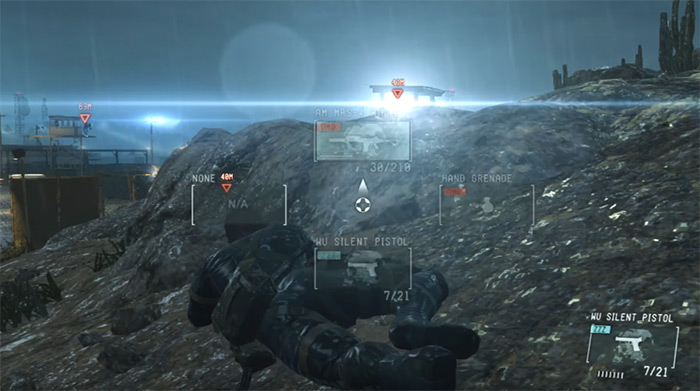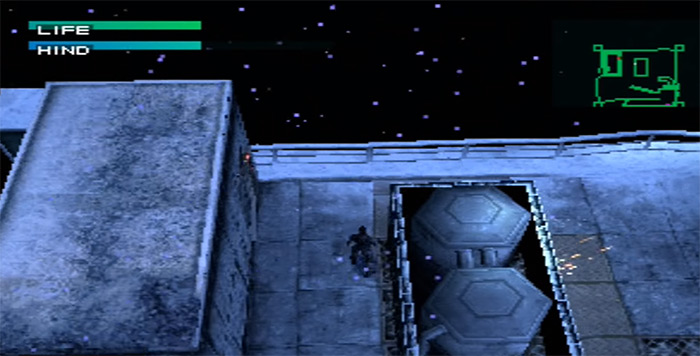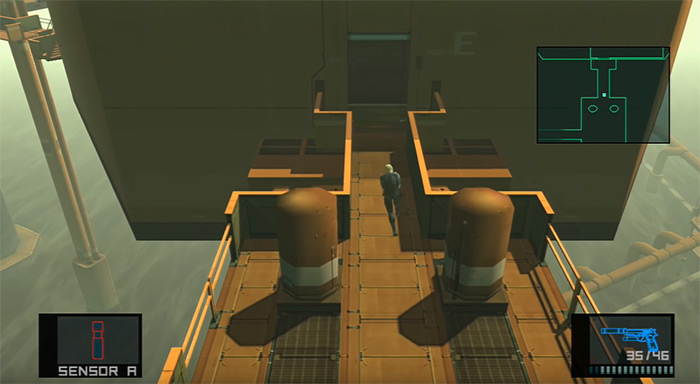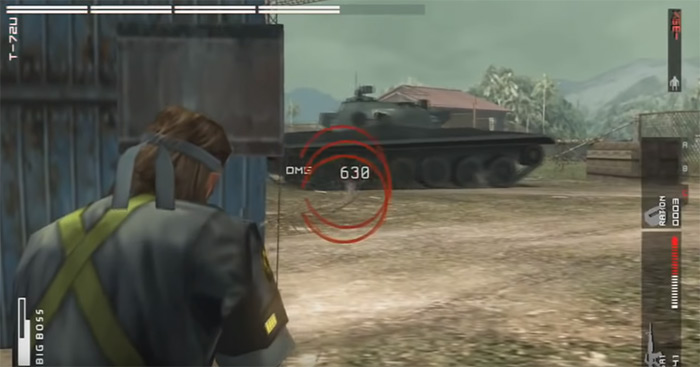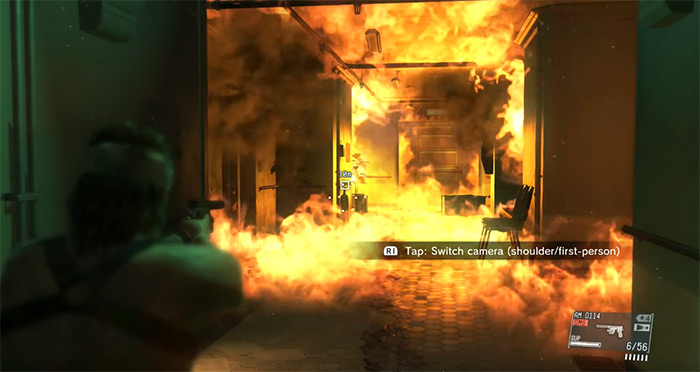It was created over 30 years ago by now-celebrity game developer Hideo Kojima. And until just recently, the series was his life’s work and a reflection of his growth as an artist. Published and owned by Konami, the franchise and the team behind it have been at the forefront of game development since its inception. It pioneered and popularized stealth games in general, while also continuously pushing the industry’s technical and creative boundaries. Its exploration of political and philosophical themes, use of storytelling techniques adapted from cinema, coupled with Kojima’s signature style and humor, have made Metal Gear one of the most relevant pieces of video-game culture. The future of the franchise is uncertain ever since Kojima left Konami. Judging from the company’s recent actions, such as using the brand to market Pachinko gambling machines in Japan, the picture looks bleak. But to find some solace and reminisce about the series rich history, I’ll be ranking and reviewing the best Metal Gear games from its lengthy history.
20. Metal Gear Solid: Social Ops (2012)
Released for iOS and Android systems as an always-online card-based mobile game, Social Ops lets the player collect and improve cards representing different characters from most entries in the franchise. Then you use these cards to go on missions and face battle bosses. The game includes footage from other MGS titles such as Peace Walker, which may give the illusion of the game having nice graphics when all it’s doing is playback. While the game can offer some fun for card-collection lovers, it felt like a cash grab on the part of Konami. Possibly to help finance the development of MGSV. It wasn’t much of a success, and it ceased operations less than a year after launch. But worth a mention for its notoriety and novelty.
19. Metal Gear Solid Touch (2009)
Another much more enjoyable foray into mobile gaming for the franchise was released for iOS shortly after the release of MGS4. This game features simple gameplay where the player aims Old Snake’s gun at enemies to clear stages, which can be a lot of fun on-the-go. This mobile game is no technical masterpiece, but it’s honestly not half bad. Plus you could unlock wallpapers and ringtones for your phone, which is always nice for those of us who like showing our colors.
18. Metal Gear Solid Mobile (2008)
But by far the most ambitious and fleshed-out mobile game in the series is Metal Gear Solid Mobile, released by Konami as a paid download from mobile carriers such as Verizon. A Metal Gear themed cellphone with the game pre-installed was also available for the hardcore fans out there. The story focuses on Solid Snake and Otacon after the events of the original PS1 Metal Gear Solid as they create Philanthropy, an organization with the single goal of wiping all Metal Gears from existence. Both graphics and gameplay are remarkably similar to the PS1 classic and its overall a very fun game. This title works surprisingly well despite the system’s limitations too.
17. Metal Gear Survive (2018)
When the most recent game in a franchise ranks below even the oldest, you know something went wrong. And oh boy, did things go wrong with Metal Gear Survive. Created by Konami after cutting ties with Kojima, the game re-purposes the engine, assets, and story elements from MGSV to create a completely different experience. Survive keeps the resource-gathering and base-building aspects from The Phantom Pain and expands upon them, while replacing the tactical espionage gameplay with a sort of survival RPG. You keep track of your character’s their hydration and hunger while exploring the desert, looking for materials and occasionally duking it out against mindless zombies. It even features wave-based base-defense sequences, which might be the most fun aspect of the game. While enjoyable, the game does little to hide the fact that it’s a cash-grab meant to help Konami recover from the millions poured into developing MGSV. Graphics are the exact same, if not worse than its three years old predecessor. Even the story, which could have potentially saved the game, was bland and carried forward by shallow characters only present to justify the action on-screen. Truth be told, I sleep better at night when I forget this game exists. Better than the cheap mobile knock-offs though.
16. Snake’s Revenge (1990)
Survive wasn’t Konami’s first experience making a Metal Gear without Kojima. That would be Snake’s Revenge, Metal Gear’s sequel for Western audiences. Released for the MSX2 as a direct continuation of the original, Snake’s Revenge is a fun game with a basic storyline that lacks Kojima’s characteristic charm and depth. It tweaks the original experience a bit and even expands upon its gameplay by adding sideview areas and a combat knife. But its biggest achievement was prompting Kojima to develop his own sequel for Japanese markets so he could set the record straight.
15. Metal Gear: Ghost Babel (2000)
Also known as Metal Gear Solid in Western markets, it’s a non-canon continuation of the original MSX game. In this GBC title, Solid Snake infiltrates a guerrilla group’s base in Central Africa to keep them from using a Metal Gear prototype to win a civil war. It was developed by Konami’s Japanese branch with Kojima acting as the game’s producer. Gameplay follows the Metal Gear 2 formula with some minor improvements, chief among them the use of a camera that follows the player through areas instead of maintaining the flip-screen format. Another big difference is that the game is divided into stages rather than one continuous campaign, making the game more digestible for the newer(at the time) on-the-go Game Boy players. Overall Ghost Babel is a solid game that brought the complete Metal Gear experience to handheld consoles. And it did this without losing a bit of its core play style or story structure.
14. Metal Gear Solid: Portable Ops (2006)
Another ambitious handheld project was MGS: Portable Ops, a direct sequel to MGS2: Snake Eater developed by Kojima Productions as the series’ third game for the PSP. It follows Big Boss in South America as he stops the main antagonist, Gene, from nuking the US to build a nation of soldiers, Army’s Heaven. The story is mostly delivered through animated comic panels with a rough style that gave it a lot of personality. While the game does a fantastic job taking the core aspects of MGS3’s game-play and adapting them for an on-the-go experience, the PSP’s cramped buttons and lack of a second analog stick made for frustrating camera-work and clunky controls. If you wish to try it yourself I suggest finding Portable Ops Plus, the mildly improved version of the game, also available on the PSP.
13. Metal Gear Acid (2004)
The first game in the franchise’s long and successful PSP career was Metal Gear Acid. This is a turn-based tactical RPG where your actions are determined by cards that the player can collect throughout levels, or from card-packs sold in the game’s internal store. These cards depicted items, characters, and actions from previous Metal Gear titles with related effects. Some even came with footage from the games that would play when they were used. They were like a shot of fan-service and nostalgia each time they were played. While the card-based system may feel foreign at first, it makes for an enjoyable experience that’s simpler while on-the-go without losing depth. It also features an engrossing narrative complete with the twists and turns the series is known for, and it definitely scratches the Metal Gear itch.
12. Metal Gear Acid 2 (2005)
A direct sequel was released a year after the original Metal Gear Acid featuring much-improved visuals with cel-shaded graphics and wonderful use of particle effects to give it a unique style. The gameplay remains largely the same, just adding more cards and some other minor updates. It’s a great game I find myself returning to every couple of years to get a quick nostalgia fix. If you liked the first one then definitely play the sequel. If you didn’t like the original then maybe skip this iteration.
11. Metal Gear (1987)
The first entry in what would become one of the most influential video game franchises of all time. The original Metal Gear follows Solid Snake as he infiltrates Outer Heaven to destroy the Metal Gear, a bipedal tank capable of launching nuclear strikes, relying primarily on stealth. While a lot of people think about MGS1 when asked what the beginning of the franchise was, that’s a big disservice to the revolutionary mechanics, intriguing story and overall excellent controls of the original Metal Gear. This is where the basic formula of the games started, and it remained largely the same up until very recently in the series.
10. Metal Gear 2: Solid Snake (1990)
In the same year that Snake’s Revenge was released in Western countries, Kojima graced the Japanese market with a true successor to the original called Metal Gear 2: Solid Snake. It was developed for the MSX2 and included updated and more colorful graphics, as well as some additions to the game such as the ability to crawl under beds and other surfaces. The action follows Solid Snake as he infiltrates Zanzibar Land in Central Asia to rescue Dr. Marv, a scientist who’s developed an algae-based alternative to fossil fuels in the middle of a global oil crisis. It deals with complex issues such as nuclear proliferation and the nature of war from the perspective of Snake, his enemies, and his support unit. This game was a clear example of the kind of creator Kojima was, and the vision he had for the franchise. It was a game that pushed boundaries and didn’t shy away from including some serious food for thought in a video game, which at the time was still largely seen as an entertainment medium for kids.
9. Metal Gear Rising: Revengeance (2013)
One of the most unique entries in the series is Metal Gear Rising: Revengeance, a game that steps away from the traditional stealthy focus of its forebears in favor of an action-packed hack and slash gameplay. It was developed by the modern masters of the art, Platinum Games, under the careful eye of director and producer Kojima. It stars MGS2’s Raiden who’s now a cyborg samurai(you read that right) slicing and dicing enemies in slow motion to stop an ultraconservative Senator from Colorado from assassinating the U.S. President and beginning a new War on Terror. That’s a mouthful. While not officially a part of the main series, Metal Gear Rising: Revengeance is one of the most daring and creatively “free” in the entire franchise.
8. Metal Gear Solid V: Ground Zeroes (2014)
Ground Zeroes. A game that’s quite the divisive topic among Metal Gear fans. The reason? It’s criminally short. It was hyped by Konami to be a vital part of the MGSV experience, but it turned out to be a sort of demo for the game’s engine with a pretty hefty price-tag. It can be cleared in less than 10 minutes and even though the point of it is showcasing the many different ways players can clear a single mission in MGSV, some fans were terribly disappointed. And that’s the only reason Ground Zeroes isn’t higher on the list, because in all other aspects the game is superb. Not only is infiltrating the MGSV version of Guantánamo Bay an amazing setting. But the Fox Engine turned out to be a technical masterpiece. Some even liked it more than the finished product delivered by The Phantom Pain. I found myself playing this game a lot, clearing every optional mission and objective I could. While it may feel short, the game is such a masterpiece it was hard for me to stay angry about the whole affair and it left me craving for more. Certainly worth playing in my book.
7. Metal Gear Solid (1998)
The original PS1 classic is where the modern era of the franchise started and the one most people cite as being their introduction to the series. It established the fundamentals of modern stealth games while remaining true to the basic formula of its MSX predecessors. The 3D graphics and detailed CGI cut-scenes were like nothing audiences had seen before. And it was perfect to deliver its intricately woven story. Solid Snake’s most iconic adventure features him infiltrating Shadow Moses Island to neutralize a terrorist group led by his brother, Liquid Snake. He meets several memorable characters during the mission, like the genius engineer Otacon and low-poly heartthrob Meryl. This game has some of the most notorious boss fights in the series too, such as Psycho Mantis and Grey Fox. And it introduces the first fully 3D Metal Gear: Rex. It was a breakthrough in interactive storytelling using CGI, in-game sequences and a wonderful musical score to tell a well-written story. I feel this game showed us a glimpse of the series’ future.
6. Metal Gear Solid: The Twin Snakes (2004)
To bring the MGS1 experience to the GameCube and make use of its powerful hardware, Hideo Kojima and Shigeru Miyamoto oversaw the development of a remake of the original PS1 classic that updated both graphics and gameplay to resemble MGS2. They improved enemy AI and added first-person shooting while also putting a lot of work into the smaller details. For example this includes re-recordings of every single voice actor line-by-line in higher quality. If you want to re-live the Shadow Moses incident then this is your best option.
5. Metal Gear Solid 4: Guns of the Patriots (2008)
Marketed and released as one of the PS4’s flagship titles, MGS4 brought the franchise to the 7th generation of consoles with a bang. The story follows a prematurely aged Snake as he goes all around the world trying to stop Ocelot from taking control of a god-like AI called The Patriots. It features amazing graphics that hold up to this day, gameplay improvements like the octo-camo suit and a superb musical score that would remain in the minds of fans for years to come. Despite the story being so convoluted and tied with previous titles that it’s nigh-impossible to comprehend for a new player, the game still introduced a great many people to the franchise. It did this by creating an emotional rapport with its characters, as well as showcasing some epic sequences in the story(including what can only be described as a fist-fight between Metal Gears). Some fans complain that many promises were made about the game before its release that didn’t materialize in the final product, but the game is still amazing by any standards.
4. Metal Gear Solid 2: Sons of Liberty (2001)
This title released for the PS2 with updated graphics and tons of new goodies for MGS fans. It added a new layer of complexity by abandoning the overhead perspective for more natural camera angles, and offered the most polished version of the “classic” Metal Gear experience. Although all promotional materials and even the game’s introductory mission feature the return of Solid Snake, most of the game actually follows Raiden: a rookie agent who sees Snake as a legend and a role model. While some people felt betrayed and disappointed by the replacement, Raiden is a fine protagonist who’s pivotal to the story of fake news, indoctrination, and censorship, all themes covered in the game. Further games in the franchise innovated by giving the player more freedom, but MGS2’s slightly more linear game-play made for some very special hand-crafted moments of tension. This, along with a story that remains relevant to this day, make it an unforgettable title.
3. Metal Gear Solid: Peace Walker (2010)
Metal Gear’s second game for the PSP took everything that worked about Portable Ops and improved upon it substantially. The graphics, especially the character’s faces, were insanely detailed for a PSP game. The controls were also creatively improved solving many frustrating issues, even if it still required some weird finger-work from time to time. The narrative tells the story of Big Boss as he builds up his Militaires sans Frontières and faces the beginning of AI-controlled nuclear tanks. The comic-panel animation from Portable Ops makes a return as the main storytelling mechanism, supplemented by in-engine cut-scenes that would play during missions and even cassette tapes the player could hear at any point they wanted to. Overall it’s an impeccable mobile experience while still offering lots of content for longer play sessions, and it shaped the franchise’s future in both gameplay and story.
2. Metal Gear Solid 3: Snake Eater (2004)
The start of the series’ chronology is also one of the most beloved games by long-time fans. MGS3: Snake Eater was innovative in the way it replaced the cramped hallways and rooms of previous titles with the Soviet jungle, giving your more freedom to plan how to approach each situation. It also introduced several survival mechanics such as thirst, hunger, and the need to treat wounds rather than just taking some health-giving pills. While far from simple, this game’s storytelling is one of the most structured and easy to understand. It takes place during the Cold War, thirty years before the original Metal Gear, and introduces Naked Snake: the soldier that would someday become Big Boss in a mission to neutralize his mentor. With some of the most amazing boss fights in the series, an inspiring narrative that sheds light on the origins and motivations of most characters, and an amazing musical score crowned by Cynthia Harrel’s beautiful rendition of Snake Eater, it’s no wonder this is most people’s favorite entry in the saga.
1. Metal Gear Solid V: The Phantom Pain (2015)
Over a year after the release of its prologue, the second half of MGSV was launched to universal acclaim. The Phantom Pain maintains(and in some cases improves) the already striking graphics of Ground Zeroes, along with its impeccable mechanics by inserting them into a sprawling open world full of beautiful landscapes. The action is driven forward by a deep story with layers of meaning that’ll tell each player something different. Every mission could be approached from a thousand angles, and the game is content with only making slight suggestions to point you in the right direction. Plus giving you a vast array of weapons, tools, and companions to build your strategies around. Every enemy base was purposefully designed along with every boss fight in this insanely detailed game. The base-building aspect of Peace Walker was re-implemented and expanded here too, allowing you to visit your base and explore every new development, discovering secrets and even some story elements you would never see if you didn’t come back to salute your soldiers from time to time. Regrettably, the game’s obsessive attention to detail also exposed several threads of foreshadowing and plot elements that led nowhere. With time it became evident a big portion of the game had to be scrapped in the aftermath of the conflict between Konami and Kojima over the latter’s overspending during development. MGSV: The Phantom Pain was, for many, their game of the year. But with more time and resources it could have become the game of the decade.
